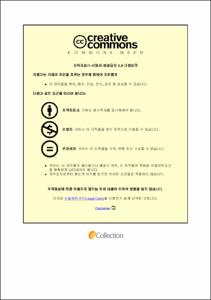Effect of Ultrasonic Power and Carbon Nanotubes Content on the Mechanical Properties of CNT/Epoxy Composites
- Abstract
- The effects of different ultrasonic dispersion power and the content of carbon nanotubes(CNT) on the mechanical properties of CNT reinforced epoxy resin composites have been investigated in this study. Tensile, bending, impact and thermal analysis were carried out and the fracture surface morphology of the composites was observed.
The results showed that the increase of ultrasonic dispersion power improved the dispersion of CNT and mechanical properties of CNT/epoxy resin composites. When the ultrasonic power was 40% and the CNT content was 0.5wt.%, the mechanical properties of the composites reached the highest value. Comparing with the those of pure epoxy resin, tensile strength, bending strength and impact value increased by 30%, 34.75% and 175.89%, respectively. SEM photos showed when the ultrasonic power was 40% and the CNT content was 0.5wt.%, the CNT were uniformly dispersed and the fracture surface was ductile. Therefore, the addition of CNT and appropriate ultrasonic power could improve the mechanical properties of CNT/epoxy composites.
- Issued Date
- 2018
- Awarded Date
- 2018. 8
- Type
- Dissertation
- Publisher
- 부경대학교
- Affiliation
- 부경대학교 대학원
- Department
- 대학원 재료공학과
- Advisor
- 문정권
- Table Of Contents
- Contents i
Abstract iii
I. Introduction 1
II. Theoretical introductio 3
2.1. Composite materials 3
2.2. Carbon nanotubes 5
2.3. Epoxy resin 8
2.4. Curing agent 11
2.5. Interface of polymer matrix composites 14
2.6. Interaction of the reinforcement and the matrix 15
2.6.1. Crack bridge connection 15
2.6.2. Crack deflection 16
2.6.3. Pull out effect 17
2.7. Dispersion of carbon nanotubes in polymer matrix 18
III. Experimental 19
3.1. Experimental material and sample size 19
3.1.1. Experimental materials 19
3.1.2. Specimen dimensions 22
3.2. Experimental process and equipment 24
3.3. Tensile test 28
3.4. Bending test 29
3.5. Impact test 30
3.6. Thermal performance analysis 31
3.6.1. TGA 31
3.6.2. DSC 32
3.7. Observation of fracture surface 33
IV. Results and discussion 34
4.1. Tensile test 34
4.2. Bending test 37
4.3. Impact test 40
4.4. Thermal performance analysis 43
4.4.1. TGA 43
4.4.2. DSC 45
4.5. Analysis of fracture morphology 47
V. Conclusions 85
References 86
- Degree
- Master
- Files in This Item:
-
-
Download
 Epoxy Composites.pdf
기타 데이터 / 6.47 MB / Adobe PDF
Epoxy Composites.pdf
기타 데이터 / 6.47 MB / Adobe PDF
-
Items in Repository are protected by copyright, with all rights reserved, unless otherwise indicated.